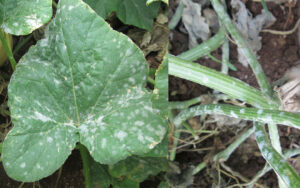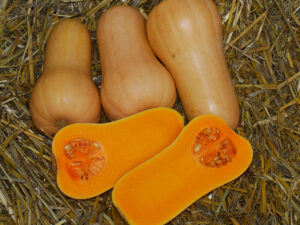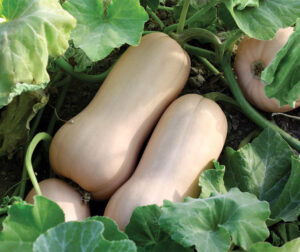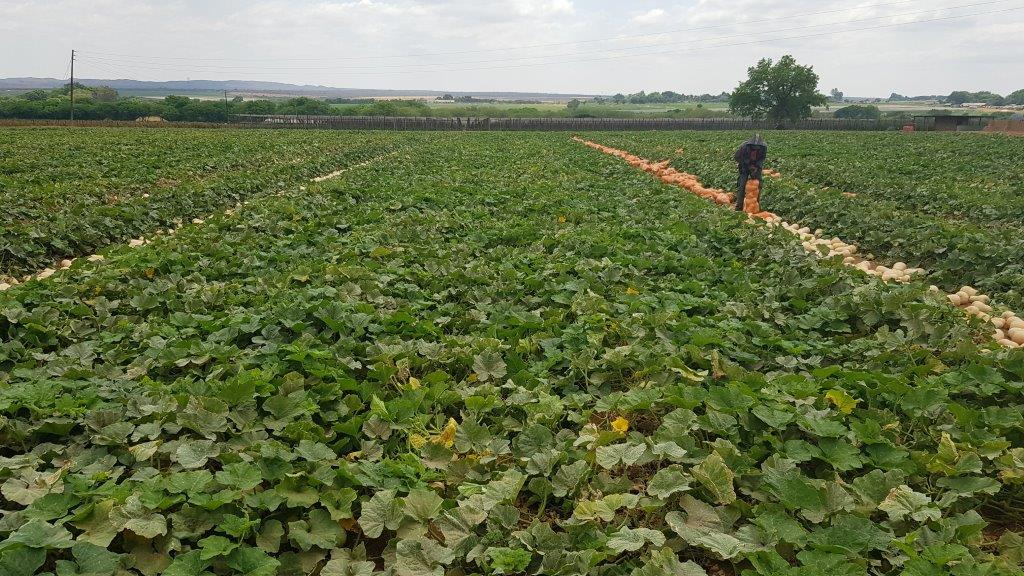
Powdery mildew is a fungal disease affecting all cucurbit crops, posing a significant risk to yields if not properly managed. The disease is found worldwide and is caused by two pathogens: Podosphaera xanthii (ex Sphaerotheca fuligenea) and Golovinomyces cichoracearum (ex Erysiphe cichoracearum).
The pathogens are obligate pathogens that survive on volunteer or weed host plants. Infection can occur between 10 and 32⁰C but the optimum temperature for development is between 20 and 27⁰C. High humidity (50 – 90%) facilitates infection, while low humidity promotes the spread of the disease. Spores are windblown and can form germ tubes in as little as two hours after contact with the leaves. New spores are produced within just four days of infection, allowing the disease to spread rapidly under favourable conditions.
Symptoms of the disease
Symptoms of the disease can be seen as white powdery spots on the leaves and stems of the infected plants. These spots can occur on both the upper and lower surfaces of the leaves. Infected leaves eventually turn yellow and can become brown and papery. While the fruit is usually not directly affected by the fungus, significant foliage loss can lead to sunburned fruit and reduced quality and yield.
To manage Powdery mildew effectively

To manage Powdery mildew effectively, it is important to implement a preventative fungicide spraying programme. Weed control and good sanitation practices can also assist to controlling the disease. By choosing resistant varieties is also an important strategy to control the disease.
Sakata’s butternut varieties
Sakata’s butternut varieties stand out for their intermediate resistance to Powdery mildew, enabling the farmer to save on their spraying costs by not having to spray for the disease as often as on susceptible varieties.
Sakata butternuts can also obtain much higher yields due to the vigorous plants that stay healthier for longer than susceptible varieties. Sakata offers a range of butternut varieties for every market requirement – from small to very large fruit.
Pluto
Pluto F1 hybrid produces medium-sized fruit (weight of 1 to 2 kg) with excellent fruit quality. The plants are adaptable and vigorous and tend to be less susceptible to diseases. Yield potential is excellent and the fruit is not inclined to crack. Pluto has intermediate resistance to Powdery mildew (Px) (ex Sf).

Quantum
Quantum F1 hybrid is the industry standard for warm-season productions, giving very uniform, medium-sized fruit. Fruit quality is excellent and weighs between 0.8 and 1.5 kg. The firm, deep orange flesh has an excellent flavour and high sugar content and mature fruit has an excellent shelf life. Fruit is used as traditional butternut, but with outstanding internal quality and shelf life. Quantum has intermediate resistance to Powdery mildew (Px) (ex Sf).
For more information on Sakata’s butternuts or to view their full product range, please visit the website at www.sakata.co.za.
DISCLAIMER: This information is based on our observations and/or information from other sources. As crop performance depends on the interaction between the genetic potential of the seed, its physiological characteristics, and the environment, including management, we give no warranty express or implied, for the performance of crops relative to the information given nor do we accept any liability for any loss, direct or consequential, that may arise from whatsoever cause. Please read the Sakata Seed Southern Africa (Pty) Ltd Conditions of Sale before ordering seed.

